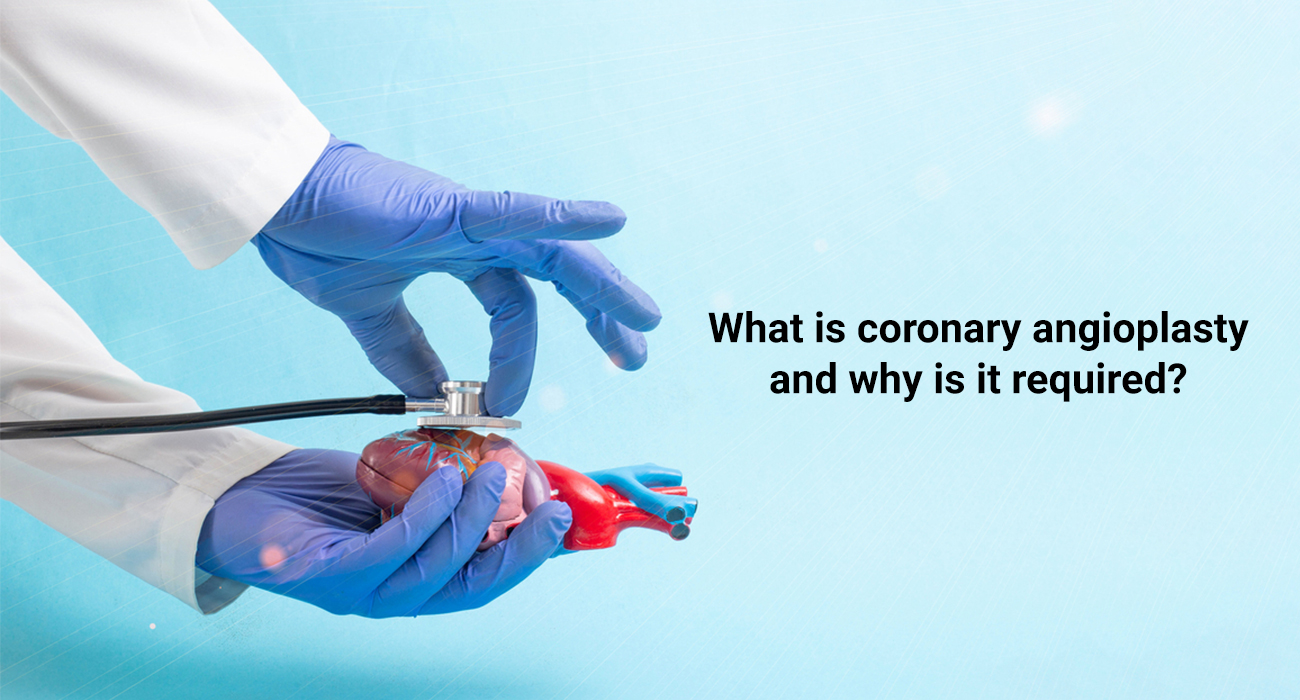What is Coronary Angioplasty and why is it required?
01/30/2023
Coronary Angioplasty is basically a cardiac procedure which is used in order to widen the narrowed or blocked arteries. Coronary arteries play a vital role as it is the main blood vessel that supplies blood to the heart. Just like other organs, the heart also requires oxygen rich blood to perform its function. Coronary arteries are wrapped around the heart so that it can supply oxygen to the heart properly. Angioplasty is a medical procedure in which a balloon is used in order to widen or stretch the blocked or narrowed artery. And most of the procedure in angioplasty is used along with stents which are combined with a small wire mesh tube which is known as a stent. The stents used in this process helps to open the artery at its place and decreases the chance of narrowing it again. Usually, most of the stents are coated with medication that helps the arteries to open and bare metal stands are used rarely. Also in most cases it helps with most of the symptoms such as chest pain, shortness of breath etc Further, in cases such as heart attack it helps in quickly opening the blocked artery along with reducing the amount of damage to the heart in that situation.
Why is it required?
Coronary Angioplasty is used to treat cardiac conditions in which there is a buildup of fat deposits and plaque in the heart's blood vessels. This kind of build up can be visualized by Angiography in Jaipur, this plaque decreases the blood flow to the heart which puts a lot of pressure on the heart that ultimately may cause heart attack or other life threatening condition. This condition is also widely known as atherosclerosis. Further, in heart center in Jaipur, angioplasty can be done in cases such as
There is no improvement in heart health despite medications, exercises and recommended lifestyle changes.
In diseases such as Peripheral Artery Disease, Carotid Artery Disease,
Chronic Kidney Disease
When heart muscles become too weak
In case of multiple blockages
Individuals who suffer from diabetes and have narrowed or blocked arteries.
Advantages of Angioplasty
Angioplasty has several advantages when compared with Coronary Artery Bypass Grafting Surgery. Some of them may be included as
- Less risky than coronary artery bypass surgery
- Do not require larger cuts
- Shorter hospital stay
- Faster recovery
- Can be used as an emergency procedure in case of a heart attack
- Easily restores blood flow
- Less risk of heart damage
- Limits damage to heart after attack a heart attack
- Reduce chest pain
Risk factors:
Every surgery have some risk factors associated with it, similarly coronary angioplasty also have few risks which are
- Abnormal heart rhythms
- Stroke
- Coronary artery damage
- Kidney problems
- Heart attàck
- Stroke
- Chest pain
- Reaction to dye or anesthesia
- Excessive bleeding
- Re narrowing of artery
- Blood clots
Procedure:
Initially, the expert Cardiologist sees the vitals that include your blood pressure, your blood sugar level, your oxygen level etc. Only after all the vitals then only the doctor begins the procedure.
- Firstly, the expert anesthesiologist uses anesthesia according to the need and requirement of the patient before starting coronary angioplasty and stents in Jaipur.
- Then a flexible tube known as the catheter is inserted through one of the arteries of arms, wrist or groin with the help of an incision. This procedure is guided by an x-ray video of the catheter.
- After that thin wire is guided to the coronary artery that delivers a small balloon to that affected part of the artery.
- The balloon is then inflated in order to squash the fatty deposit against the artery wall so that the blood can easily flow through it.
- But in many cases stents can also be used which are usually around the balloon before it is inserted.
- The stent is usually then expanded when the balloon is inflated and keeps the stent in place. After that the balloon is deflated and removed carefully.
- This procedure usually takes 30 min to 2 hours based upon the complexity of the procedure.
- The patient is kept under observation for a day or two based upon the recovery pattern. Also the doctor recommends a few preventive measures such as avoiding alcohol heavy lifting, strenuous exercise etc and a few lifestyle changes, diet in order to maintain heart health.

